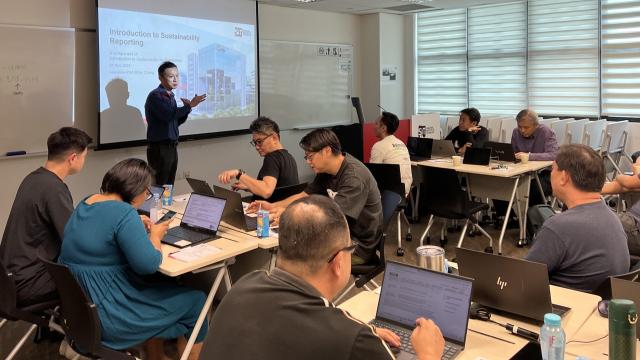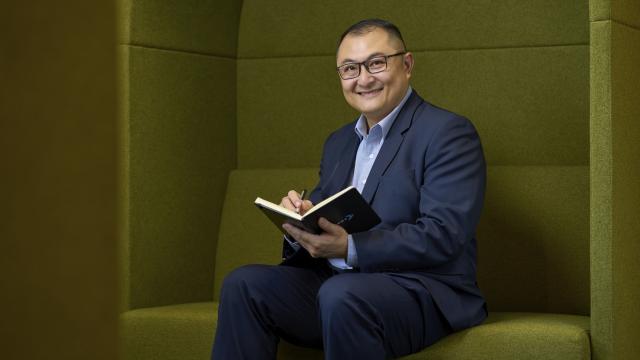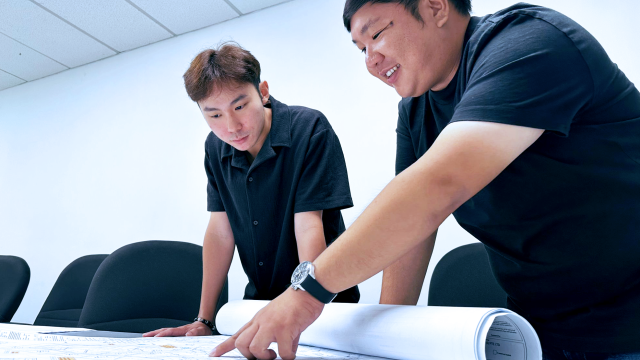SIT's workplace learning programme with Rotary Engineering brings employees up to speed with best practices and the latest in technologies.
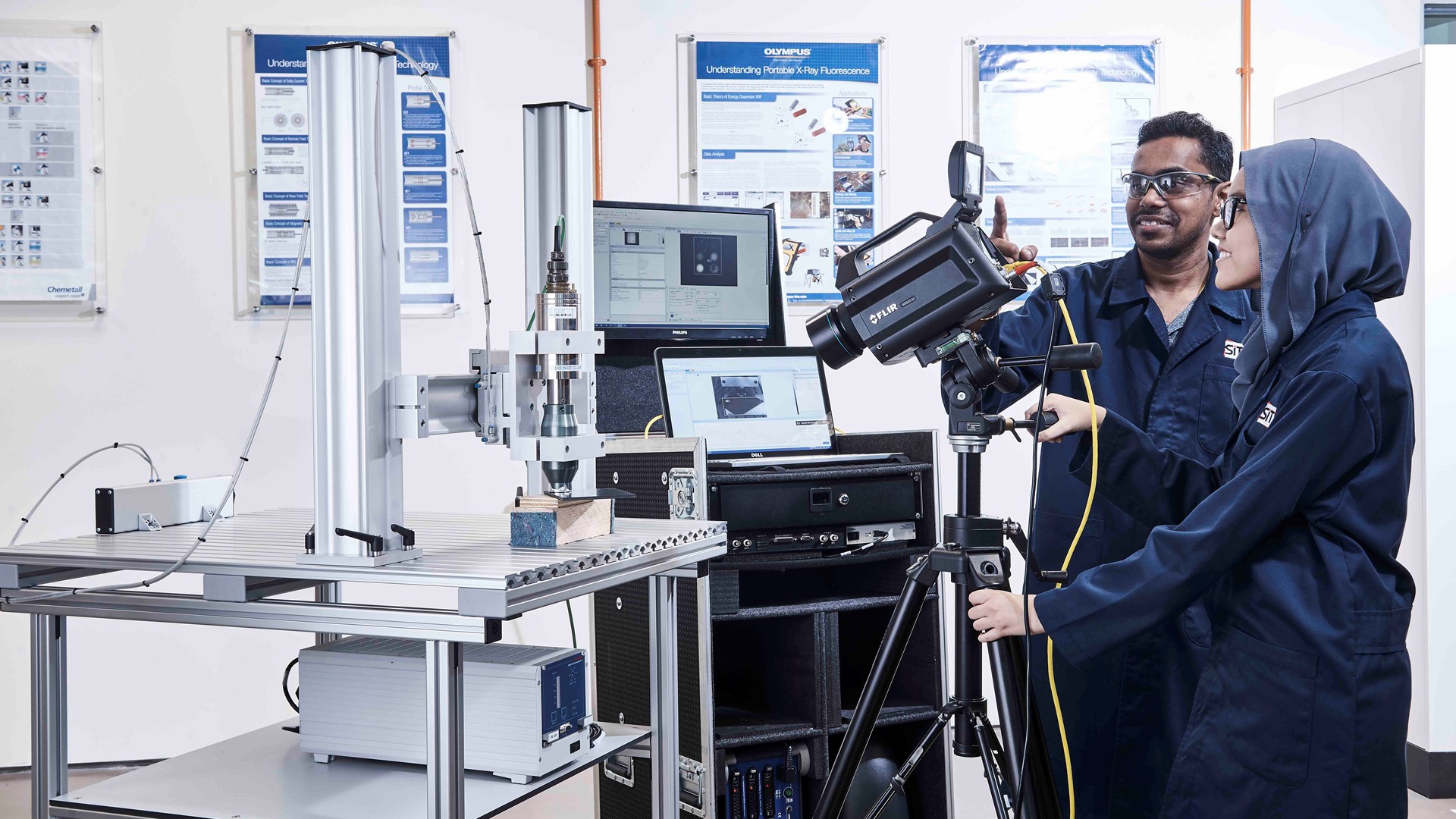
Rajkumar Abdul Rasheed Khan (left) showing his student the thermography testing method, one of the Non-Destructive Testing capabilities at SIT. (SIT Photo)
To ensure the integrity and health of components, assemblies and structures during construction, engineers often perform industrial radiography on worksites such as buildings, storage tanks, large structures and shipyards. Done late at night to limit radiation risks, the process is tedious, time consuming and error-prone.
First, the equipment is set up carefully, including the radiograph film on which the X-ray image will be imprinted. Then, the engineers have to time it just right to get the required shots. They take the film to a dark room and develop it to get an X-ray image. If the film isn’t placed properly or the wind blows too hard, they must start all over again.
This is just one of many outdated processes that engineers still go through today, even though digital radiography is available, and is more efficient and instantly creates an X-ray digital image after the initial scan.
According to the SkillsFuture Singapore report released in November 2022, engineering and technology is one of five “job families” facing transformation and redesign, and that it is important for workers to think about upskilling or reskilling to stay versatile or take on new opportunities.
Mr Rajkumar Abdul Rasheed Khan, Lead Professional Officer at the Singapore Institute of Technology (SIT), noted, “The oil and gas sector of engineering is one of the last to implement new technology as compared to the aviation industry which leads the technology wave front.”
To fill this gap, SIT stepped in. The National Centre of Excellence for Workplace Learning at SIT (NACE@SIT), the first workplace learning centre in an autonomous university, operates a workplace learning programme. This programme equips professionals with the latest skills and know-how.
As part of a Memorandum of Understanding inked with Rotary Engineering, Southeast Asia’s largest engineering partner to the oil and gas industry, SIT tailored a six-month workplace learning programme for Rotary staff.
The course, helmed by Mr Rajkumar, is designed to address pain points and topics, such as Non-Destructive Testing (NDT), Quality Assurance/Control and Engineering Drawings.
To create a well-rounded programme, he sought help from industry experts. But while he is familiar with NDT methods like ultrasound, thermography, computer tomography and industrial X-ray, which test the integrity and strength of structures, he is not used to the oil and gas sector practices. This is where his networks within the industry proved vital, being a member of the Non-Destructive Testing Society (Singapore).
“I went out to look for experts, one of whom is at Rotary Engineering. He put me in touch with a few candidates. Eventually, I found others to teach certain topics I have less experience in.”
The benefits of Workplace Learning
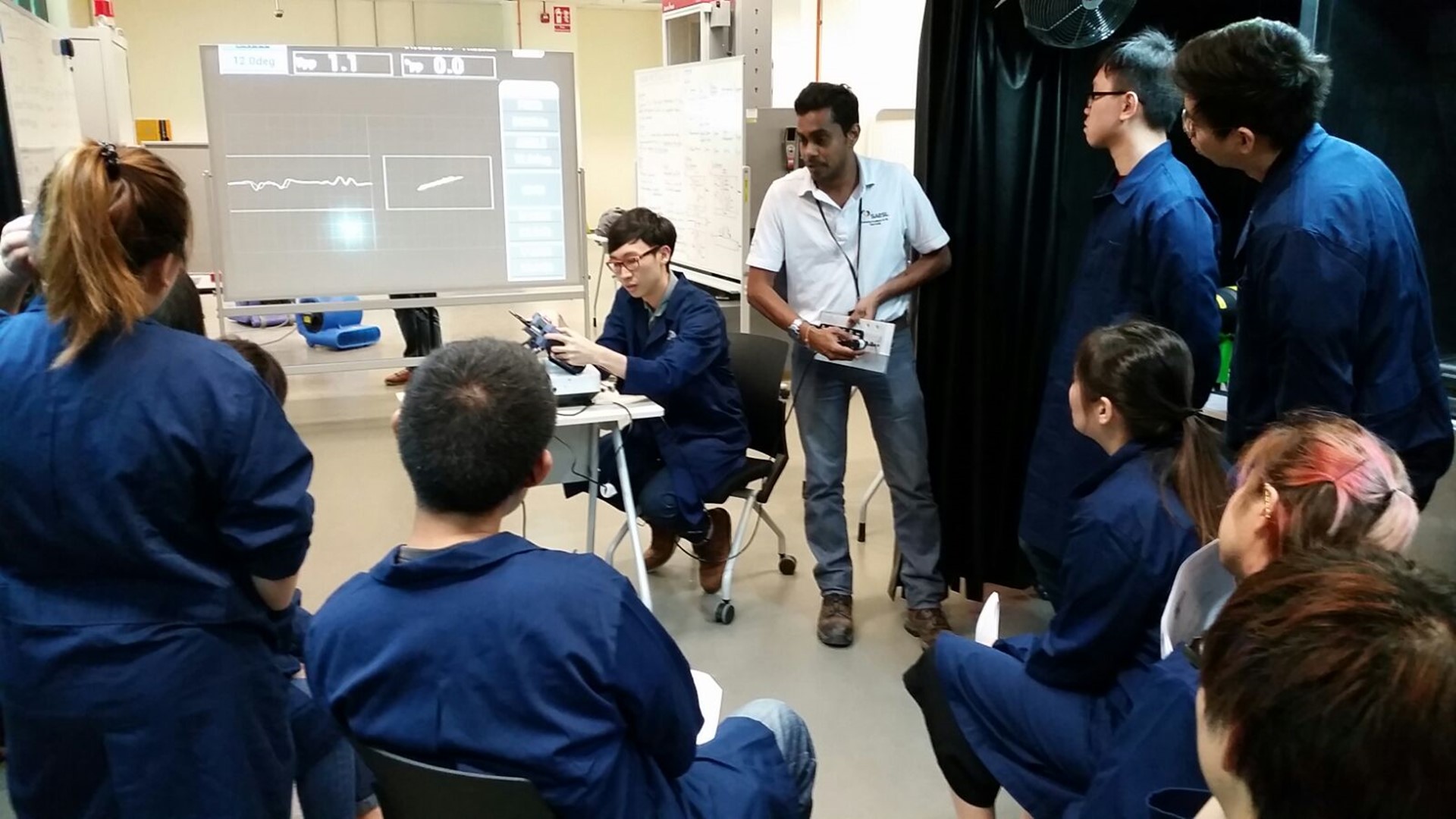
Rajkumar (in white shirt) teaching his students at SIT to perform Eddy Current Testing, a Non-Destructive Testing (NDT) method. (Photo: Rajkumar Abdul Rasheed Khan)
Unlike the current standard Continuing Education and Training (CET) Training programme, workplace learning provides employees the flexibility to present authentic workplace issues and challenges to the trainers during the lessons, and the counter-measures are being discussed during working hours. This boosts the effectiveness of the course, as trainers are able to pinpoint and address weaknesses in-depth, based on insights from Rotary.
“If it’s just another typical classroom training, the training will just deliver the content. It’s just going to be information uploading where participants capture knowledge based on individual experience and level of understanding, but half of them won’t understand what I say,” said Mr Rajkumar, who specialises in aerospace systems and worked in aviation at Rolls Royce before joining SIT. “In this case, I share with them and when they come back after applying their learning to practice, they would have seen the real-life application of the content at work.”
To make the programme relevant to Rotary, Mr Rajkumar made it a point to visit its work sites, taking note of work techniques, practices and storage methods.
Going Above and Beyond
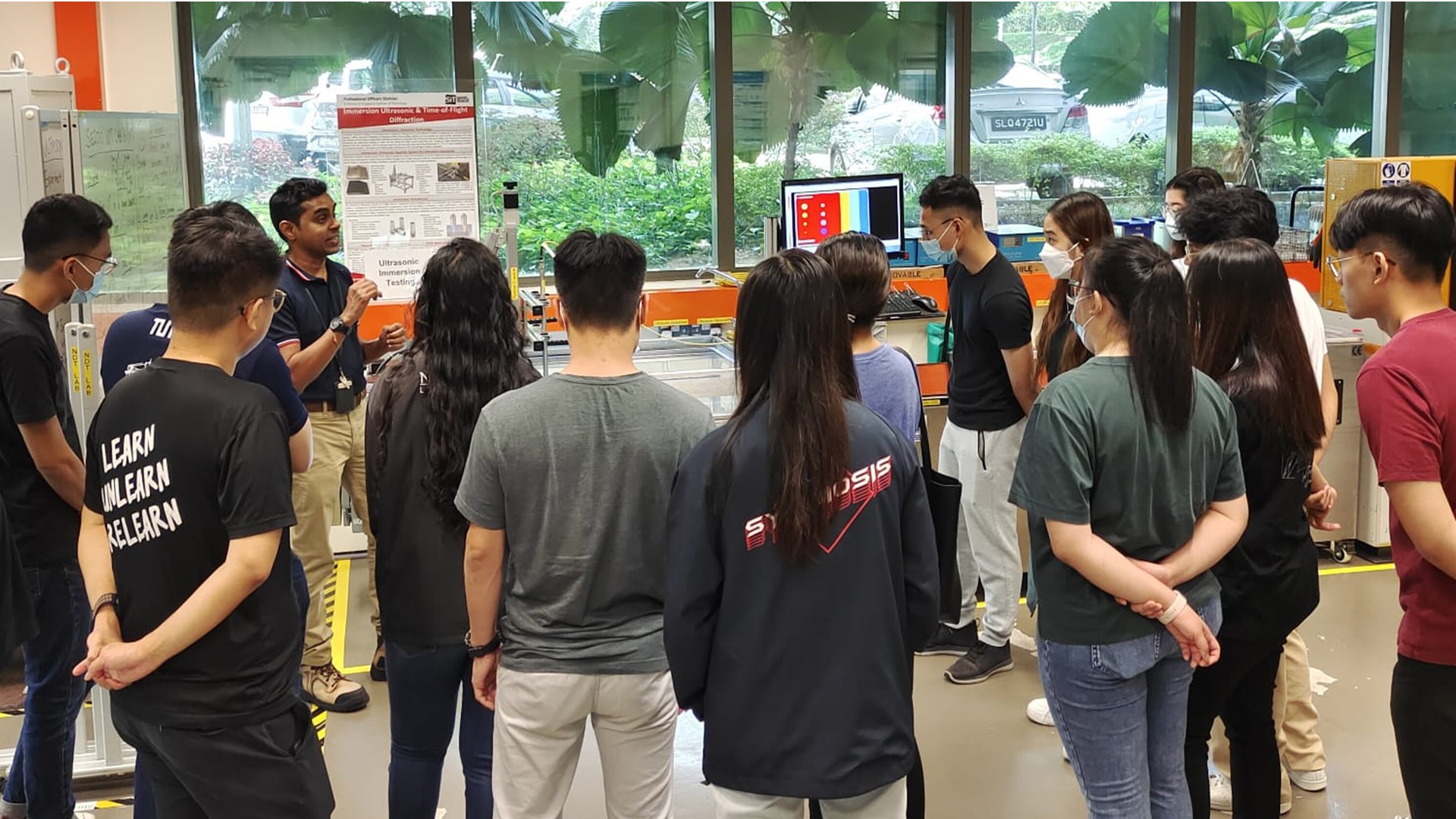
Rajkumar showcased the NDT capabilities in SIT to his Chemical Engineering students during a lab visit. (Photo: Rajkumar Abdul Rasheed Khan)
Due to COVID-19 restrictions that led to work delays, the course had to be taught online. But on the last day of the programme, Mr Rajkumar arranged for an in-person practical class, which turned out to be a productive, hands-on session. Participants performed experiments, observed the effects, noted the methods used and then wrote reports.
Much like most university classes, passing the class required the participants to successfully complete reports on engineering drawing, NDT and so on. In one day, they covered the practical applications of four NDT methods that were taught over the six months.
“The Quality Assurance Quality Control (QAQC) module has taught me something new and provided me a better understanding of the works and importance of QAQC. We went through the theory in class and I’m now able to apply this knowledge during practical site work,” said Dickson Ong, a project engineer at Rotary.
The programme has been such a success that Rotary is already working with SIT for another course next year. After all, the students were not the only ones who benefited. Mr Rajkumar, too, gleaned important insights from his students, fresh knowledge which would inform his work at SIT.
“Some of these participants might have more experience and seen more than I have,” he said. “When they share, I also learnt a lot. Collaboration and partnerships enhance the effectiveness of education.”

